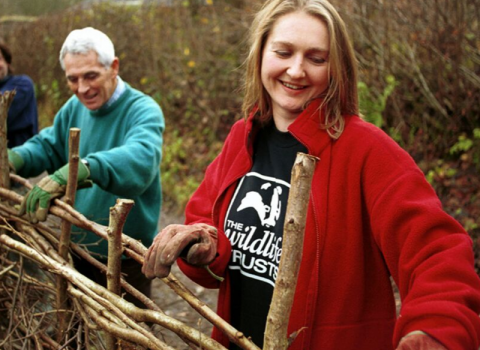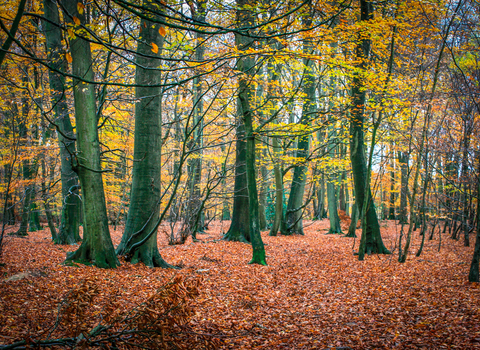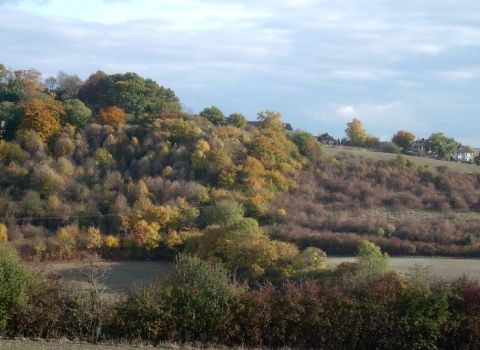Homefield Wood by Kate Titford
Homefield Wood
Know before you go
Dogs
When to visit
Opening times
Open at all timesBest time to visit
March to AugustAbout the reserve
Forest past
Woodland and grassland have existed on this warm slope for at least 200 years, though forestry work has created many changes. The reserve is made up of beech, ash, sycamore and whitebeam with glades and open grassland.
Rare orchids
Wild orchids flourish in both the woodland and the grassland here. Some grow in the shady woodland, while others prefer the bright sunshine of the open grassland areas or woodland edge. Species include the handsome military orchid, rare in the UK, which grows on the scrubby grassland here. Its dense spikes of pinkish-violet flowers have petals and sepals folded in such a way that they resemble a knight's helmet. The distinctive lower petal is shaped like a human form with 'arms' and 'legs' and the spots resemble buttons on a jacket. Although widespread in Europe, the military orchid is rare in Britain, flowering in late May and early June and is found on only a small number of sites in the UK.
Butterflies, bees and moths
The rich variety of wild flowers that grow here attract butterflies such as the marbled white, white-letter hairstreak and the silver-washed fritillary. A variety of bees also find nectar in the flowers, and over 400 species of moth have been recorded, including blotched emerald and striped lychnis.
Birds and mammals
Resident and visiting species of birds include chiffchaff, cuckoo and blackcap. Tawny owls can often by heard calling during the day. Fallow and roe deer are also regular visitors to the reserve.
Species
Contact us
Environmental designation

Volunteer with us
Our volunteers help us in so many ways - by working on nature reserves, helping at visitor centres, leading walks, training others and much, much more. Without our volunteers we would not be able to carry out much of our work.
For more information about volunteering for BBOWT, please get in touch with volunteering@bbowt.org.uk


